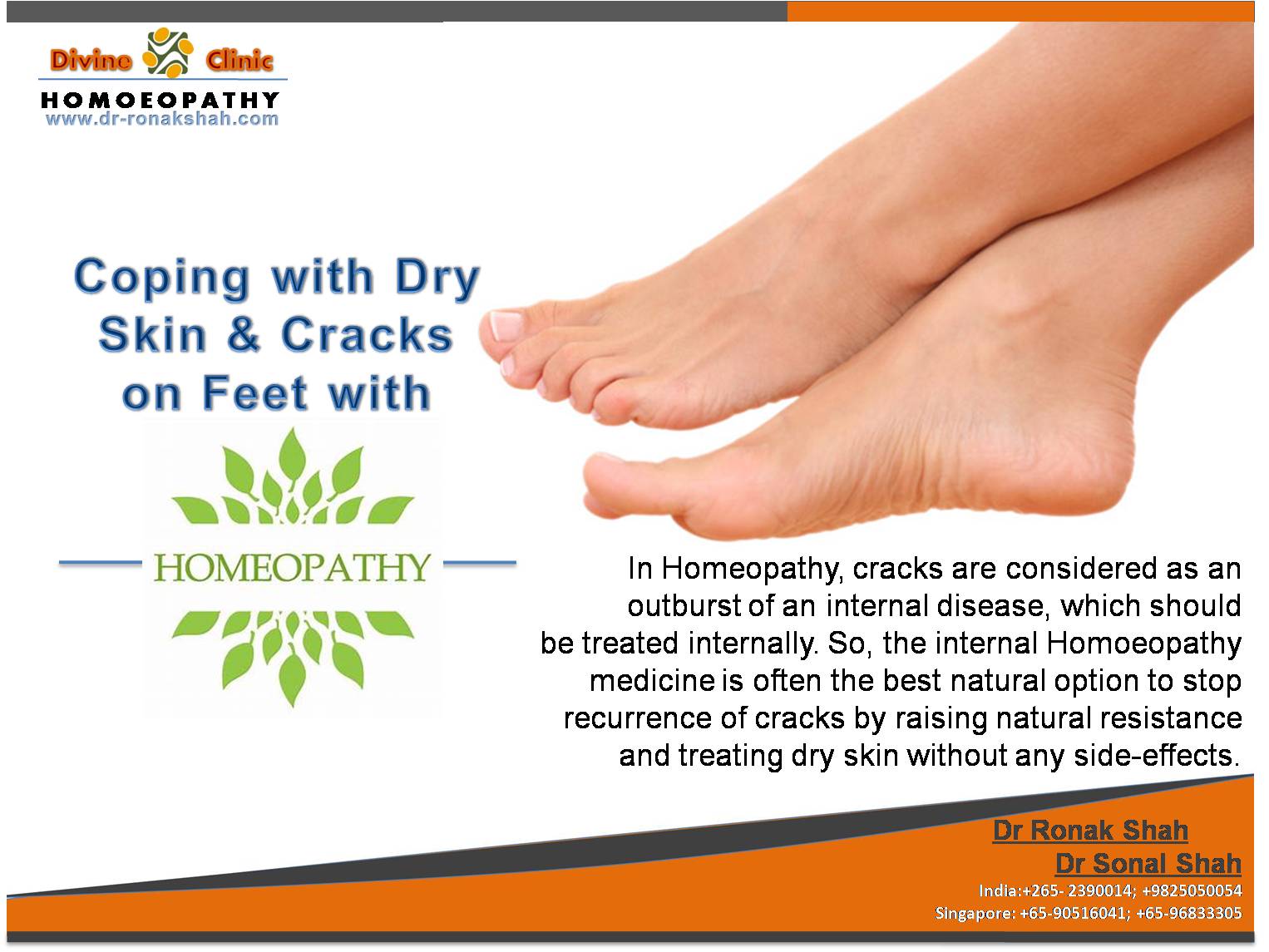
Coping with Dry Skin and Cracks on Your Feet
Do you have dry, cracked skin on your feet? If so, you are not alone,
as this is a common foot problem.
Fissures of the heel and soles commonly referred to as cracked heels or
chapped soles are very common, especially during the winter season when the skin
tends to become dry. Although any part of the soles of the feet may be affected
and become chapped or crack, it is the heels that are more commonly affected.
The condition is also more common in females than males mainly due to wearing
shoes that unevenly distribute the body weight and shoes that are opened at the
back. Hormonal factors may sometimes be involved. Appearances of dry cracked
heels also indicate zinc and omega-3 fatty acid deficiency.
CAUSATIVE FACTORS FOR CRACKED FEET:
· Diseases and
Disorders-Athlete’s foot, Psoriasis, Eczema, Thyroid disease, Diabetes and some
other skin conditions may also
cause cracked heels.
· Being overweight can
put a lot of pressure on the heel of a person’s foot.
· Skin
condition/diseases such as diabetes, psoriasis or eczema, cause people to suffer
from dry skin, and dry skin that is
responsible for cracked feet.
· Dry skin or xerosis
is one of the most common causes that lead to cracked heels.
· Hard floors may also
cause cracks in the feet. Standing for prolonged periods in a damp area such as
a bathroom can cause dry and
cracked heels.
· Deficiency of
vitamins, minerals and zinc
· Continuous exposure
to water
SYMPTOMS
· Surface on the skin
are simple indicators of a faulty internal activity or an external abuse.
· Red or Flaky Patches
on feet
· Peeling and Cracked
Skin: This symptom generally follows the red or flaky skin. Peeling cracked skin
is a definite sign of dry
cracked heels and immediate measures must be taken
to remedy the condition
· Itchy skin is caused
by the abnormal shrinking of the upper layers of dry skin. This excessive
shrinking causes the stretching of the
skin below and around the affected areas
and this results in general discomfort and itching.
· Bleeding or discharge
from cracks in heels is a very serious problem as it indicates that the cracks
not only affect the upper layers
of the skin but also the lower layers of
tissue. Deep cracks in the heels will also increase an individual’s risk of
suffering from a
skin infection in this area.
TIPS TO PREVENT CRACKED FEET
· Keeping the heels
well-moisturized, especially in the winter months or in dry weather, can not
only prevent the formation of
calluses and cracked heels, it can heal the
condition in the initial stages.
· Soaking the feet in
warm water for 10 to 15 minutes, followed by rubbing gently with a pumice stone
can remove the thickened
skin. This may be followed by application of a
moisturizer to keep the feet soft and smooth.
· The pulp of a ripe
banana applied directly to the skin is also an effective way to get rid of
cracks. The pulp should be left on for 10
minutes and then rinsed off.
· A mixture of glycerin
and rose water should be applied daily onto the affected skin for as long as
needed.
· Papaya and lemon
juice make a good remedy that needs to stay on for 20 minutes.
· Feet can also be
massaged with some coconut oil, which is good for moisturizing and soothing the
skin.
· Another effective
remedy is a mixture of paraffin wax with some mustard oil. It should be applied
every night, covered with clean
cotton socks and rinsed in the morning for 10 to
15 days.
· People who are prone
to dry and callous feet and cracked heels should also consider changing their
diet and making sure that they
take all the important nutrients, especially
vitamin E, calcium, iron, zinc and omega-3 essential fatty acids.
· It goes without
saying that hygiene is essential for treating cracked heels. Feet should be
washed and exfoliated regularly.
Homoeopathy for cracked feet
Homoeopathy offers a long lasting solution to cracked feet by treating the
causative dryness rather than trying to only heal the existent lesion. It treats
the root cause of the disease or problem and heals naturally, reducing the
likelihood of disease recurrence. Homeopathic medicines should logically be
taken at the beginning itself because delaying the appropriate treatment will
only cause the problem to get more chronic and take longer to treat Homoeopathic
treatment believes in internal treatment and can give permanent cure to cracks.
In Homeopathy, cracks are considered as an outburst of an internal disease,
which should be treated internally. So, the internal Homoeopathy medicine is
often the best natural option to stop recurrence of cracks by raising natural
resistance and treating dry skin without any side-effects.
COMMONLY INDICATED HOMOEOPATHIC REMEDIES:
1. Acid.nit: Crackling
of feet with bleeding on washing. Foetid foot sweat causing soreness of
toes.Cold, blue nails. Chill blains on
feet and toes. Splincter like pains.
2. Petroleum: Cracked
feet. Tips of fingers rough, cracked and fissured especially in winter. Cracks
bleed easily. Tenderness of feet
which are bathed in foul smelling sweat. Heat
and burning of sole of feet. Feet burn and sensation as if frozen.
3. Grapites:Cracked
feet. Toe nails crippled. Stiffness and contracted of toes. Nails brittle
crumbling and deformes.Painful and
soreness of feet. Cracks or fissures in ends
of fingers. Offensive foot sweat.
4. Other remedies:
Antim Crud, Carbo Animalis, Nat Mur, Rhus Tox, Psorinum, Sulphur